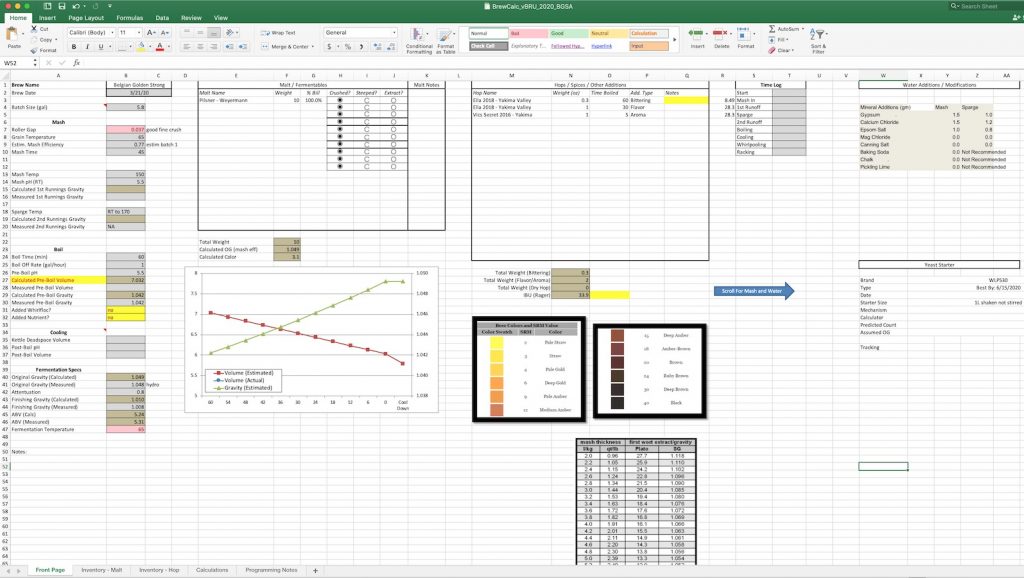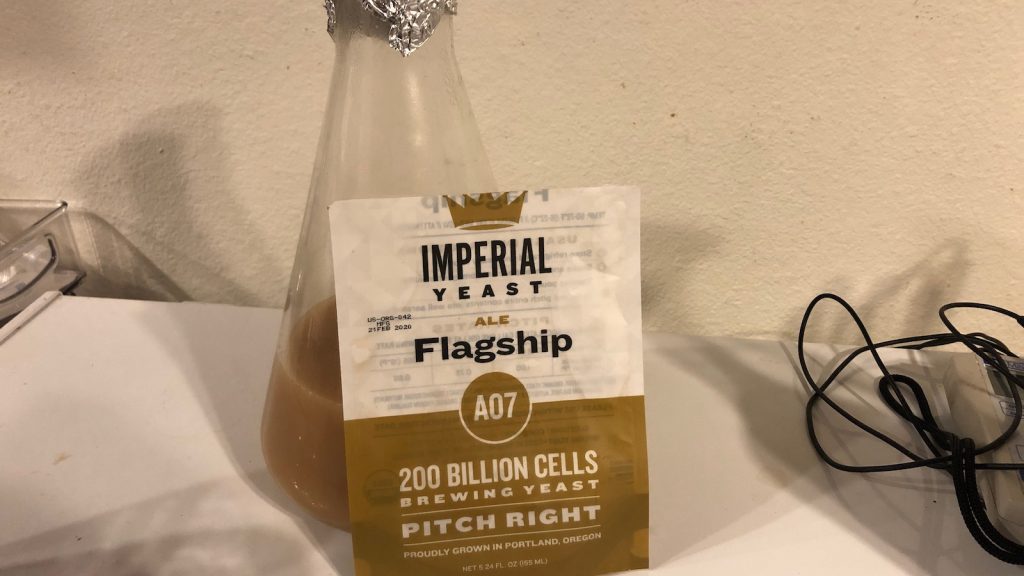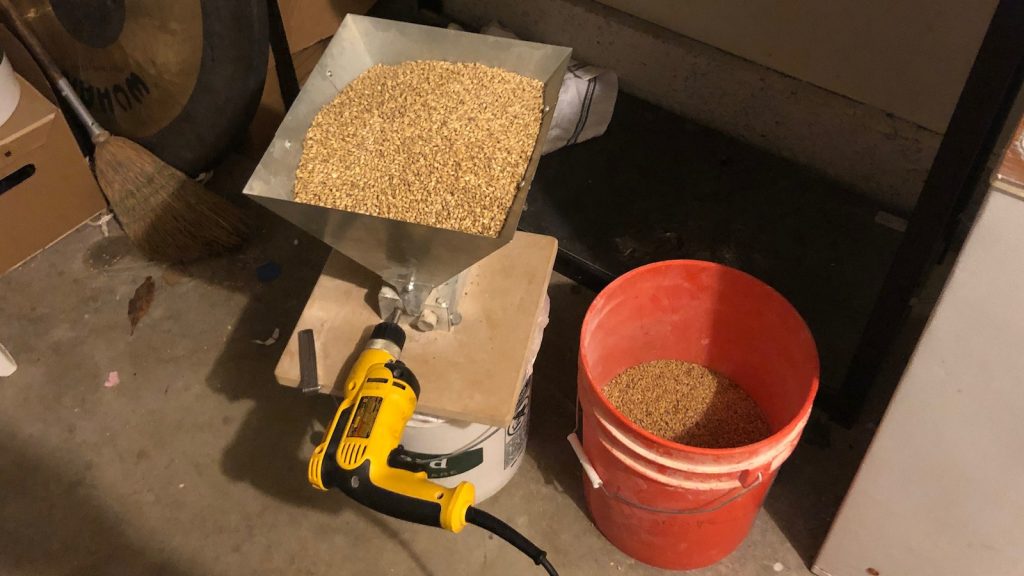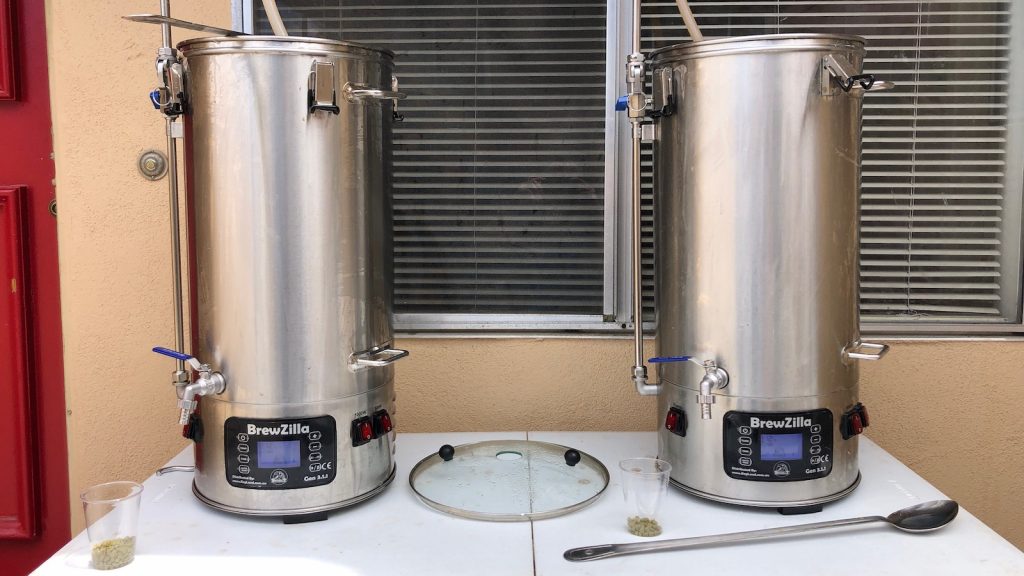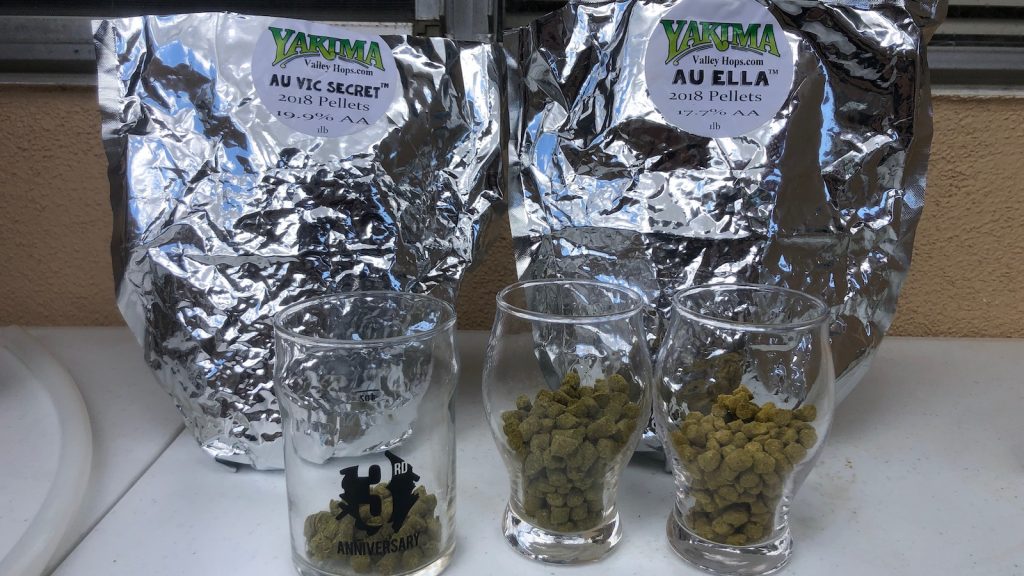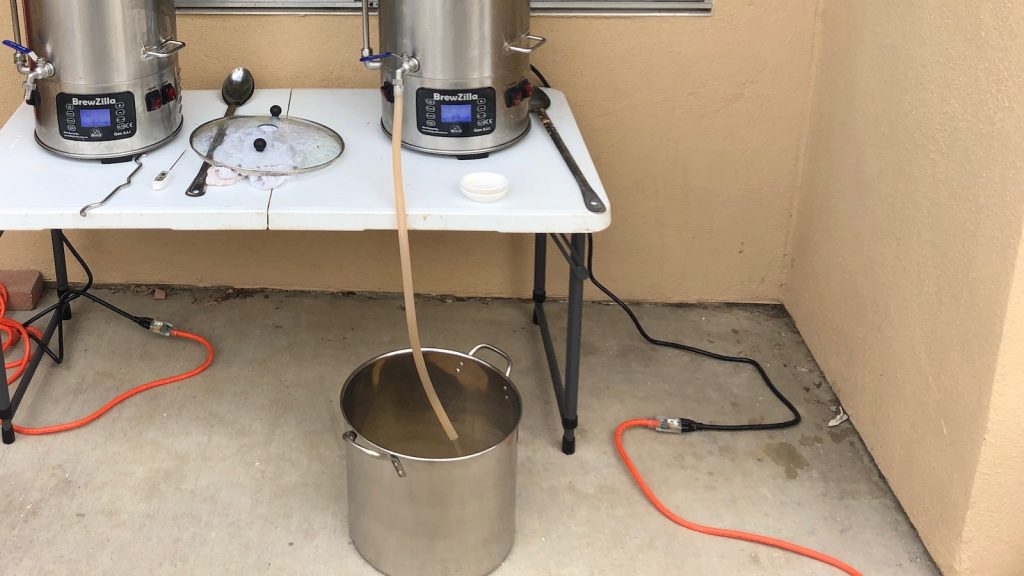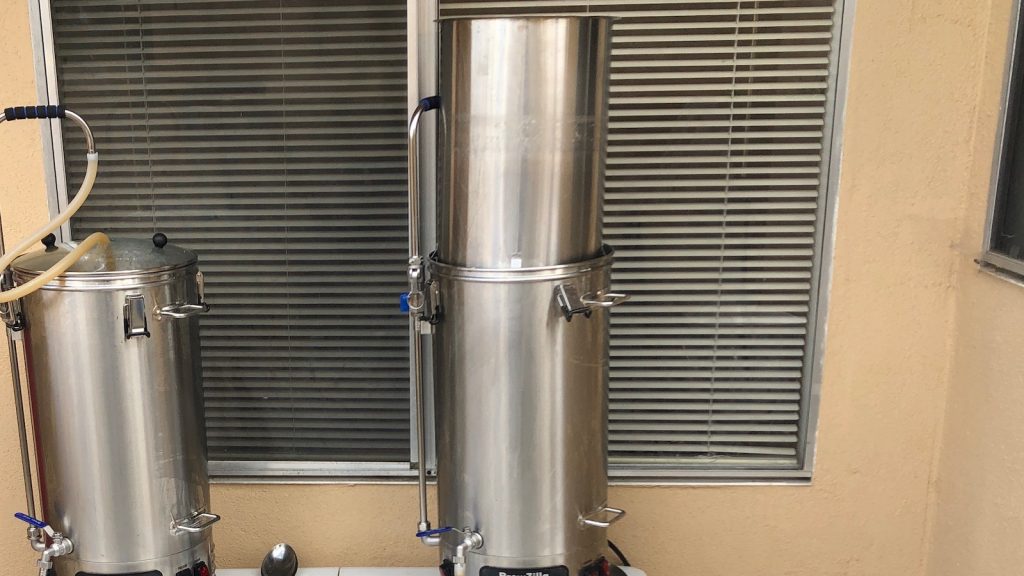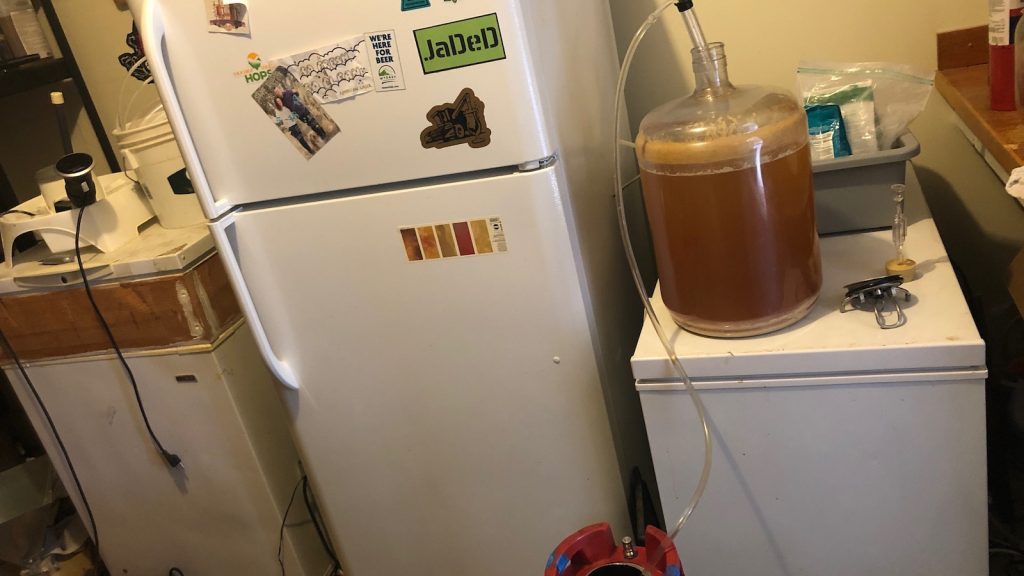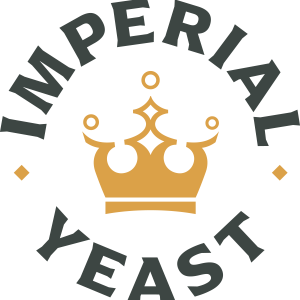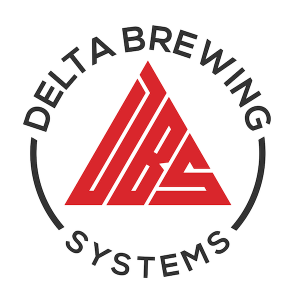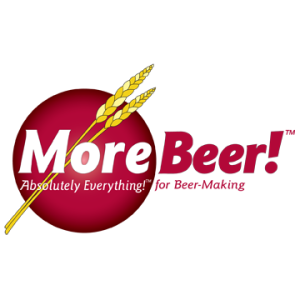Andy grew up on the North Shore of Chicago where, as a kid, he took quickly to building computers, amateur radio, and other hobby electronics projects (the original “homebrewing”). In 2008, Andy moved to California to pursue a graduate degree in electrical engineering; after receiving his PhD in 2013, he started his career as a Research Scientist. Andy has been an active member of the Ventura Independent Beer Enthusiasts (VIBE) homebrew club since 2011.
| ABOUT ANDY |
How did you get into brewing?
In 2008, my senior year of college, I started to appreciate beer for its range of flavor. I already enjoyed hobby electronics projects when I began looking into brewing my own beer, and with everyone’s favorite “gateway drug,” Charlie Papazian’s The Complete Joy of Homebrewing, I knew I was onto something. I read it cover-to-cover a few times over and scoured the internet as well. It wasn’t until mid-2009 that I bought my starter kit from Midwest Supplies and brewed my first batch.
What was your first batch and how did it turn out?
My first batch was an extract with steeping grains version of Midwest Supplies’ Big Ben Pale Ale. I remember it being generically malt-forward and not as hoppy as described. In hindsight, following the written directions and boiling the snot out of the wort was not the best course of action. In the end, I was happy I made something I could drink, so I pressed on with the hobby.
How did you get involved with Brülosophy?
I have been a fan of the site for as long as I can remember. As an engineer by training, I always appreciated the blind triangle tests, and growing up as a homebrewer in the days of HBT, it was often hard to separate fact from fiction. Once I saw what Marshall was cooking up, Brülosophy became a go-to brewing resource for me. After having talked a bit online, I invited Marshall to give a talk at the Southern California Homebrewers Festival in 2017 where we met in person and subsequently forged a friendship. I wasn’t until late 2019 that Marshall proposed the idea of me joining the crew, which I was excited to accept.
What xBmt has surprised you the most?
I’ve been surprised by the results of a bunch of xBmts, but one that really got me was Malcolm’s comparison of Galaxy and Mosaic. After seeing the title, I was sure it would come back significant, but nope! Since both of these hops can be difficult to get, it’s not like you can save any money by swapping one out for the other, but it really forced me think more about hops in general.
Have the xBmts influenced your current brewing perspectives?
The Lager Effect xBmt, along with other lager focused xBmts and Short & Shoddy lager brews, have really chipped away at the mystique of Saccharomyces pastorianus for me. Also, a common brewing go-to about body and mouthfeel is mash temperature, which various xBmts have called into question, leaving me more convinced such characteristics likely lie in aspects beyond saccharification. Finally, while the majority of the beers I brew are done using the batch sparge method, the results of the xBmt comparing it to the no sparge approach have influenced me to try other mash methods to see what I like best.
What are your 3 favorite styles of beer?
I appreciate most beer styles, but definitely have a few favorites.
IPA
At this point, IPA means “anything pretty hoppy.” I trained my craft beer palate on West Coast IPA, so it has a special place in my heart. I jam a good number of New England IPAs too, and even enjoy the occasional English IPA, which is usually homebrewed. Just gimme the hops!
Belgian Golden Strong
Whether it’s from Duvel, my local watering hole, or someone’s homebrew, I cannot get enough Belgian Golden Strong. Insanely effervescent, dry, peppery, hoppy; it’s everything I want in a beer.
Lambic/Gueuze-Style
The naming debate will rage on– Lambic and Guezue are only made in the Senne Valley of Belgium, everyone else is making something else. Still, I refer to those names for blonde sour beers brewed outsde of that region, as I feel that pays respect to the originals. They age with the best of any alcoholic beverage, so I never mind hoarding a few cases to experience how they develop over time.
What are your favorite ingredients?
Malt: Weyermann Pilsner Malt
While a little pricier than domestic versions, I like the neutral flavor and style flexibility Weyermann’s Pilsner malt offers. And maybe if I keep brewing with it, they’ll send me those snazzy red overalls.
Hops: Sterling
I brew my fair-share of “cheater hop” IPAs, but when I’m making lighter styles, Sterling often makes an appearance. I like how they add a North American edge to what I perceive as being an otherwise Centennial-like hop profile.
Yeast: Imperial Yeast B48 Triple Double
I don’t actually use this yeast as often as others, but forced to choose a favorite, B48 Triple Double takes the cake. This strain is perfect for the Belgian styles I enjoy brewing, especially Belgian Golden Strong, drying the beer our while leaving the expected fermentation character. Great stuff!
I’d also like to add that CO2 is one of my favorite ingredients, as beer wouldn’t be the same without it.
What’s your desert island beer?
Sierra Nevada Pale Ale. Yeah, I didn’t list American Pale Ale as a favorite style, but this beer never ceases to amaze me every time I have it, which is fairly often.
What music do you listen to while brewing?
If Nine Inch Nails isn’t playing, something is wrong.
What else do you enjoy doing besides brewing?
Homebrewing is a significant part of my life, and it’s not just the brewing I do– I’m also a member of the Board of Directors for the California Homebrewers Association, which organizes the Southern California Homebrewers Festival. As an all-volunteer board, it is time consuming but quite rewarding. I also enjoy cooking and the process of learning new ingredients and methods.
If you could go back, what brewing advice would you give yourself?
I would have brewed smaller batches before jumping to 5 gallons. Today’s (2020) brewing scene is world different than five years ago, let alone 10. We have better access to ingredients, refined equipment and techniques, and stellar commercial beer. I worry that newcomers to the hobby will be off-put if their first batches don’t approach the quality at the bottle shop. Brewing 2-3 gallon batches is feasible with less equipment, on a stove top, cheap fermentation temperature control, etc. Modernizing the “homebrew starter pack” is essential, and I think Brulosophy’s research has shown what matters and what does not.
| BREWING GEAR & PROCESS |
I recently transitioned from a typical 5 gallon propane setup to electric. It’s still fairly new to me, so I’m learning with every batch, but so far it’s been an excellent experience.
Pre-Brew Preparation
I’m old school and have been designing all of my beers using a custom spreadsheet I made awhile back. It’s simple and it works relatively well, though I’ll be moving to BeerSmith 3 soon.
I still tend to make starters a day or two ahead of time for most of my beers to ensure I’m pitching the proper amount of yeast.
I use store-bought RO water for every batch and focus mostly on sulfate and chloride levels. When brewing darker beers, I use pickling lime to cut the acidity since it dissolves more readily than chalk and a little goes along way. On brew day, once the water has been adjusted and is heating up, I weigh out and mill the grain with a Monster Mill MM2.
Brewing
I recently started brewing on a couple BrewZilla V3.1.1 units, their all-in-one nature makes for an incredibly easy brew day. While various mash methods can be used on these units, I’ve opted to stick with batch sparge because it’s what I know.
Once the strike water is properly heated, I add the grains and stir the mash to eliminate dough balls.
I then turn the pump on and set the controller to my desired mash temperature.
During the mash rest, I measure out the kettle hops.
Once the mash rest is complete, I collect the first runnings of sweet wort in a kettle.
At this point, I add the sparge water to the grains and let it sit for a few minutes before removing the grain basket, letting it drain a bit, then adding the first runnings back to the kettle.
The wort is then boiled, typically for 60 minutes, at which point I pump it through the stainless chiller included with the BrewZilla while racking to whatever fermentation vessel I’m using.
The filled fermenter is then places in my fermentation chamber, which is a chest freezer with a STC-1000 controller.
Packaging & Serving
When fermentation is complete, I use an auto-siphon to rack the beer from the carboy to the keg.
The filled keg gets placed in my 3-tap keezer where it gets hit with 10-12 psi and is left alone until it’s properly carbonated. While I occasionally use other carbonation methods, I prefer the ease of the the set-and-forget approach.
Cleaning & Sanitation
For cleaning my gear, I primarily use Powdered Brewery Wash (PBW), and my sanitizer of choice of choice is Star San. I don’t really do anything special in this department, just make sure all of my wares are clean and properly sanitized before use.
Contact Andy via email at andy@beerconnoisseur.local and feel free to leave any questions in the comments section below!
Brülosophy Merch Available Now!
Follow Brülosophy on:
FACEBOOK | TWITTER | INSTAGRAM
If you enjoy this stuff and feel compelled to support Brulosophy.com, please check out the Support page for details on how you can very easily do so. Thanks!


